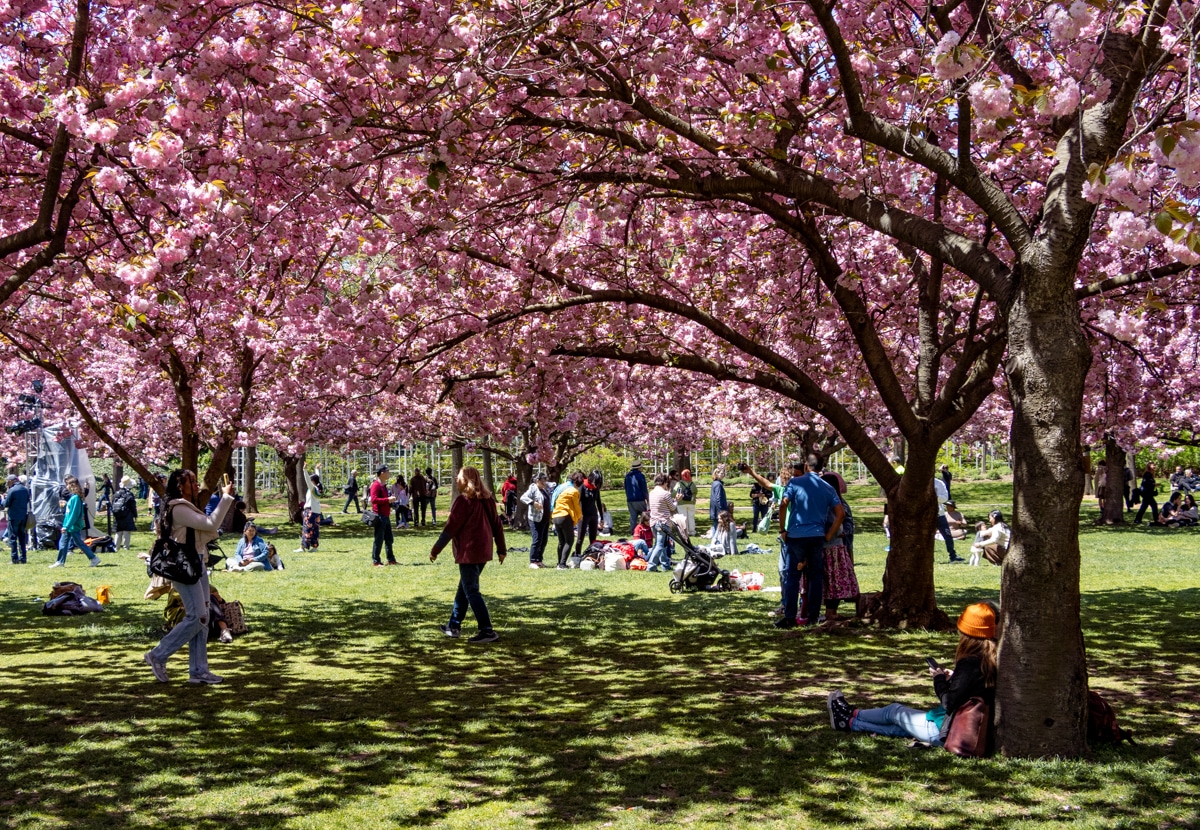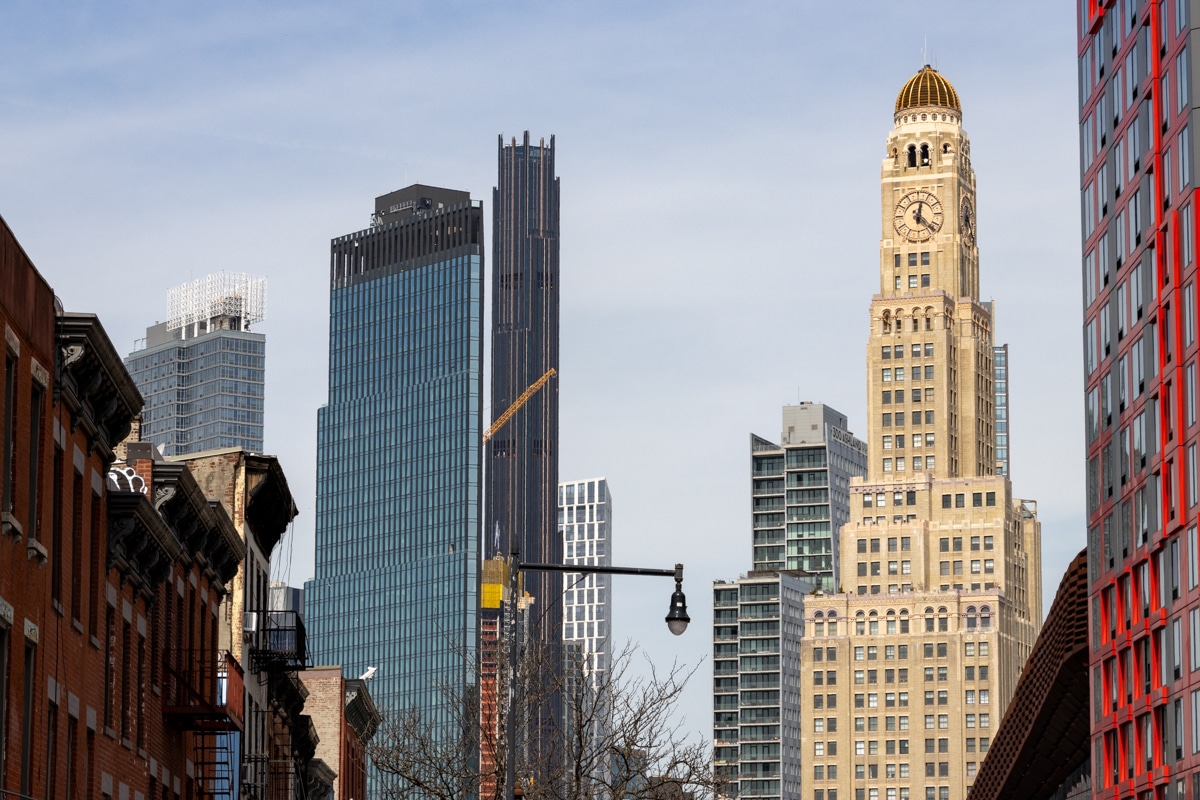AY Arguments Heard at Appellate Court
Appeal arguments in the Atlantic Yards case — 26 neighborhood and civic groups against Forest City Ratner and the Empire State Development Corporation — were heard at Appellate Court yesterday, and folks challenging the project seemed to feel optimistic about it. The plaintiffs “intently listened to the exchange between the five-judge panel and the attorneys…

Appeal arguments in the Atlantic Yards case — 26 neighborhood and civic groups against Forest City Ratner and the Empire State Development Corporation — were heard at Appellate Court yesterday, and folks challenging the project seemed to feel optimistic about it. The plaintiffs “intently listened to the exchange between the five-judge panel and the attorneys yesterday afternoon. They heard a judicial bench that was extremely skeptical of the ESDC’s rationale for its blight determination,” reads a DDDB press release. The defendants were required to prove that the area surrounding Atlantic Yards was blighted, and thus eligible to be snatched up under eminent domain, so the entire 30-minute argument focused on the definition of blighted (any talk of making an area blighted by way of demolishing it, as in the photo above?). Defendants squirmed when answering, and, wrote Atlantic Yards Report, “representatives of developer Forest City Ratner and the Empire State Development Corporation (ESDC), along with their clutch of attorneys, exited looking none too cheery.”
What Remains. Photo by horseycraze.









BTW, one way that Norman Oder has been biased has been his choice of topics to cover. When Patti Hagan was ousted from the DDDB board, he hardly gave it the degree of investigation that he devotes to Ratner et al. Same goes for when Daniel Goldstein made racially-remarks.
I don’t know why you people are bothering to argue with one another. This legal case shall unfold exactly as all of the others, namely that the anti-Ratner camp endlessly claims imminent victory, only to lose in the end.
Norman Oder is indeed biased and heavily against the project. All of his posts on legal cases read the same: frequently using words like “seems” and “may”, hoping like hell that the opponents will win, which, of course, they never have and never will.
D-O-N-E D-E-A-L
“I’m more concerned about housing, jobs and something positive happening at that intersection where there’s been a hole in the ground my entire life.”
That’s lovely. You still have not even attempted to show how Norman Oder is biased. You have not shown how Norman Oder is devoid of facts.
You have shown yourself a supporter of jobs and housing. I’m afraid to inform you that EVERYONE says that they are in favor of jobs and housing. I would argue that there are much better ways to achieve these goals.
If you don’t mind bringing the discussion back to the original thread, we could achieve our common goals much quicker if the ESDC followed the laws. We could achieve these lovely goals if the ESDC or anyone in our government bothered to do a market analysis, which was an important part of the discussion in court yesterday.
Does the project benefits outweigh the negatives? This shouldn’t be determined by a blog discussion. It should have been determined by our elected leaders BEFORE deciding to give hundreds of millions of dollars away in subsidies.
DDDB and the other community groups argued that the state was acting capriciously and irrationally. We will find out in a few months whether the judges agree.
That hole in the ground is necessary for the LIRR — it’s the railyards, not just a hole in the ground. If that’s your definition of blight then I’d say the entire railroad industry is in big trouble.
Yes, it may not be the most aesthetically appealing site, but a thriving, busy railyard is not blight.
And the parts that Ratner wants to take by eminent domain are not in that “hole in the ground” that so offends you — they are apartment buildings, houses, and condominiums on Dean and Pacific Streets — hardly blighted areas.
That’s right, harriet – the meeting was held to determine whether or not the area is blighted, and I do believe it is, and the outcome of this meeting won’t change my opinion, which was formed over the 45 years I’ve lived in Brooklyn and dealt with this crappy eyesore. However, whether or not Oder’s report is laden with “facts” is quite another story altogether. His report, as I mentioned, includes a good amount of speculation as to the meaning behind the judges’ reactions, questions and “looks.” I wouldn’t confuse these with “facts.” As I mentioned, I’m content to wait for the real facts, i.e., the ultimate result of the fight.
“I can’t see being pro-AY in spite of all the evident short cuts, derogation of due process, sweetheart subsidies and back-room deals that have been well documented, even forgetting the aesthetic disaster it represents.”
I heard the same complaints when other projects like MetroTech were built and in the end, the positives outweighed the negatives. Do I think the project is perfect? Certainly not, and I do have some problems with the design as well. But overall, I think it’s a good project for this area, and frankly I don’t care if a developer is going to get subsidies and make a sh**tload of money as a result. That’s what developers do, and he won’t be the first. I’m more concerned about housing, jobs and something positive happening at that intersection where there’s been a hole in the ground my entire life.
“”Maybe you can buy a transcript if you want something free of what you perceive as bias.”
I’m not quite that concerned. I have my own viewpoint, and what comes out of this meeting won’t change that.”
Okay, so you admit that you are biased, and that facts won’t change your mind. And then you say that Oder is biased (without giving any examples) because he disagrees with you.
I think I get the picture.
Might be time for you to attend these meetings yourself. It’s naive to expect an “impartial” report, there’s no such thing. Oder is reasonable and calls the shots well, and I’d say that’s as good as it gets. If nothing else, he’s a stickler for factual accuracy.
I can’t see being pro-AY in spite of all the evident short cuts, derogation of due process, sweetheart subsidies and back-room deals that have been well documented, even forgetting the aesthetic disaster it represents. After a while the adage where there’s smoke there’s fire does have a basis.
“Maybe you can buy a transcript if you want something free of what you perceive as bias.”
I’m not quite that concerned. I have my own viewpoint, and what comes out of this meeting won’t change that. I’m willing to wait it out and see where this all goes. Hopefully the judges will realize that despite the three buildings, the area has been dominated by a massive hole in the ground for more than 40 years, and on that basis qualifies as blighted. It certainly does from where I stand. I’ve been looking at that crappy train yard since I was a kid. Sure the appeals could work – and that would be a drag, but I’ve lived through other disappointments. In any event speculative “reporting” about what MIGHT happen, I imagine, will not impact the outcome.
I was there. I’m against the project. But Oder’s reporting is straight-up. Maybe you can buy a transcript if you want something free of what you perceive as bias. Otherwise, you’re SOL, because no journalist other than Oder bothered to cover the hearing (or at least they haven’t published anything yet).
Yes, the appeal could actually work. At least two of the judges seemed very skeptical of the ESDC’s position. That doesn’t mean there’s a third, and it doesn’t mean the law is there to support the judges’ opinions. History has shown it’s extremely difficult to win these types of cases. But the tenor of the judges’ questions and comments couldn’t have been too encouraging to the ESDC and FCRC.